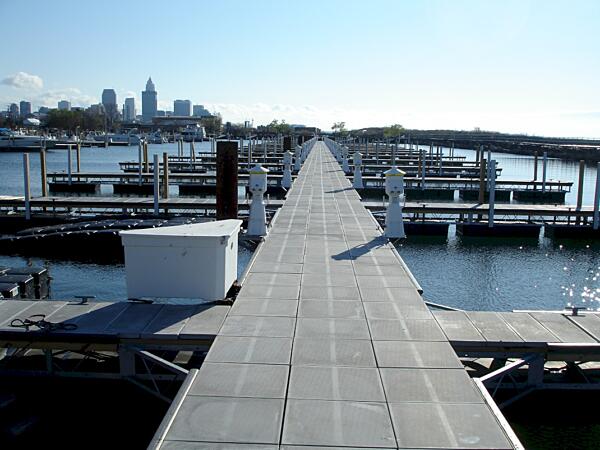Polarity Reversal
I got a call the other day, and the fellow on the phone said someone told him galvanized steel cannot be used above 140 F (60 C) because the zinc reverses polarity and causes the steel to corrode. What is this effect and should I be telling people not to use galvanized steel in high temperature environments?
This is a case of taking one situation and generalizing it to make a broad sweeping statement that ends up making no sense. The facts of the polarity reversal effect in hot-dip galvanizing limit the potential for its occurrence to a very specific situation. Applying these facts to a broad category such as all high-temperature environments is totally incorrect. This is another example of misinformation about hot-dip galvanizing that must be corrected.

If we examine the facts about polarity reversal, we can easily correct this mistaken assumption that all high-temperature environments experience the accelerated corrosion of the zinc coating. This accelerated corrosion from polarity reversal was first discovered when hot water heaters for residential and commercial applications experienced premature failure when they were hot-dip galvanized. The hot water heaters lasted only a few years before they developed leaks. The ensuing investigation discovered that the zinc coating developed cracks, and the underlying steel material was completely depleted underneath the cracks. Some investigators went back to the labs to try to duplicate this effect. Merely heating the hot-dip galvanized pieces to the same temperature as the hot water in the heater, 140 to 180 F (60 to 82 C), had no effect on the zinc coating. When the pieces were immersed in soft water at these same temperatures, the zinc coating developed cracks and the steel sacrificed itself to protect the zinc.
Further research revealed the presence or absence of certain ions greatly affects the polarity reversal. Water solutions that do not have any dissolved oxygen ions in them show no signs of the polarity reversal. The presence of bicarbonates and nitrates in a water solution enhances the possibility of experiencing a reversal of the zinc/steel corrosion protection. Zinc potential increases in the presence of these ions, while the steel or iron potential remains unchanged. This causes the steel to become anodic, and the zinc to become cathodic, thereby causing the steel to corrode in order to protect the zinc.
Other ions such as chlorides or sulfates will cause a slightly different effect on the surface of the zinc coating. The zinc potential decreases in the presence of these ions, so the zinc coating remains anodic to the steel and no polarity reversal will take place. Soft waters usually have significant amounts of dissolved oxygen and very small amounts of chlorides and sulfates. Hard waters have higher amounts of chlorides and sulfates as these are part of ionic salts that make it hard water. Hard waters also have bicarbonates, so there are some tradeoffs when using 140 to 180 F (60 to 82 C) water in a galvanized container. Increasing the temperature changes the time for the polarity reversal to appear. If the temperature a water solution that can cause a polarity reversal is just above 140 F (60 C) I the polarity reversal may take a month to happen. If the temperature is close to 180 F (82 C), the polarity reversal may take place in a couple of hours.
So, rather than occurring in any high-temperature application, the polarity reversal effect must have some specific conditions before it happens. The hot-dip galvanized part must be in contact with a water solution, the water solution must contain dissolved oxygen, the water solution must also contain some bicarbonate or nitrate ions, and the temperature of the solution must be in the range between 140 and 180 F (60 to 82 C). Only if these conditions are present can the zinc coating experience the polarity reversal. Other high-temperature environments are perfectly acceptable for hot-dip galvanized coatings.
© 2025 American Galvanizers Association. The material provided herein has been developed to provide accurate and authoritative information about after-fabrication hot-dip galvanized steel. This material provides general information only and is not intended as a substitute for competent professional examination and verification as to suitability and applicability. The information provided herein is not intended as a representation or warranty on the part of the AGA. Anyone making use of this information assumes all liability arising from such use.

